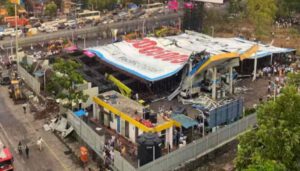Mumbai’s Urban Heat Management Costs Surpass New York City, Moody’s Study Reveals

Mumbai, 6th February 2024: A recent study conducted by Moody’s RMS sheds light on the significant financial strain Mumbai faces in managing urban heat generated by extensive concretization, surpassing even the expenditure of New York City in this regard. The research underscores the urban heat island effect, wherein cities experience notably higher temperatures than surrounding rural areas due to increased concretization.
The findings reveal a substantial increase in risk mitigation costs for Mumbai, with a staggering 126 % rise year-on-year attributed to heightened urban heat stress. Moreover, under a projected higher-emissions scenario for the year 2050, this cost escalation is anticipated to reach 166 %. In contrast, New York City exhibits an 82 % increase in costs when examining different density zones under a moderate 2050 emissions scenario.
Utilizing high-resolution modelling, the study assesses the global impacts of elevated urban temperatures, including effects on productivity, health, and energy consumption. It pinpoints specific locations within Mumbai where urban heat stress leads to significant productivity losses and increased costs, particularly in the city’s core areas.
Urban areas are particularly vulnerable to extreme heat due to alterations in surface characteristics, such as impervious and dark surfaces, tall buildings, and direct heat emissions from human activities. This exacerbates the urban heat island effect, contributing to elevated temperatures, with cities experiencing an average temperature increase of 8 degrees Fahrenheit compared to surrounding rural areas, particularly during the late afternoon and evening hours.
Furthermore, the study underscores the global repercussions of the scorching summer of 2023, marked by unprecedented high temperatures worldwide. These extreme heat events, influenced by human-induced global warming and natural climatic factors like El Niño, caused disruptions across various sectors, including agriculture, business, energy infrastructure, and public health.
To mitigate the economic fallout of heat events, targeted investments in modifying urban infrastructure and the built environment are imperative. These measures can bolster urban resilience against heat-related challenges and help alleviate the adverse effects of climate change.





